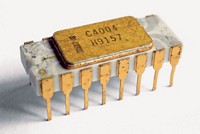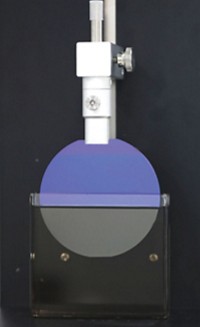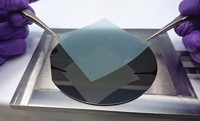Advertisement
Grab your lab coat. Let's get started
Welcome!
Welcome!
Create an account below to get 6 C&EN articles per month, receive newsletters and more - all free.
It seems this is your first time logging in online. Please enter the following information to continue.
As an ACS member you automatically get access to this site. All we need is few more details to create your reading experience.
Not you? Sign in with a different account.
Not you? Sign in with a different account.
ERROR 1
ERROR 1
ERROR 2
ERROR 2
ERROR 2
ERROR 2
ERROR 2
Password and Confirm password must match.
If you have an ACS member number, please enter it here so we can link this account to your membership. (optional)
ERROR 2
ACS values your privacy. By submitting your information, you are gaining access to C&EN and subscribing to our weekly newsletter. We use the information you provide to make your reading experience better, and we will never sell your data to third party members.
Electronic Materials
Engineers build a computer with carbon nanotubes
Device uses 14,000 nanotube transistors to run simple programs, pointing to an electronic future beyond silicon
by Prachi Patel
September 5, 2019
| A version of this story appeared in
Volume 97, Issue 35
Researchers have made the first carbon nanotube computer capable of running simple programs (Nature 2019, DOI: 10.1038/s41586-019-1493-8). The microprocessor integrates more than 14,000 carbon nanotube transistors built with processes used by the electronics industry.
“It is a critical first step to move nanotube transistors from research labs into manufacturing plants,” says Qing Cao, a materials scientist at the University of Illinois at Urbana-Champaign who was not involved in the work.
Silicon transistors have enabled today’s digital world, but they are now reaching their limits in terms of how small chipmakers can fabricate them. Some researchers believe carbon nanotubes could take electronics onward past silicon. “They have the magical combination of being tiny but also excellent conductors,” says Max Shulaker, an electrical engineer and computer scientist at the Massachusetts Institute of Technology and a member of the team that built the new device. Plus, nanotube inks could be used to print multilayer devices for dense 3-D circuits that move data quickly. As a result, carbon nanotube computers could be significantly faster and more energy-efficient than silicon ones.
In the past two decades, carbon nanotube electronics have progressed from a single transistor to a simple 178-transistor computer reported by a Stanford University team in 2013; Shulaker, then a graduate student, was on that team. Yet a microprocessor that can execute the complex computations necessary to run modern programs requires tens of thousands of transistors in two flavors: n-type and p-type, which conduct electrons and positively charged species called holes, respectively. These two types connected together form an inverter, the building block of computer circuits. But carbon nanotubes are hard to work with, and have inherent defects and variable electronic properties that have prevented researchers from building large circuits.
Shulaker and his colleagues, working with engineers at chipmaker Analog Devices, developed ways to overcome these major issues and make nanotube transistors on an industrial silicon wafer. They hit one challenge at the very first step of making transistors, which involves coating the wafer with nanotubes. A single layer of nanotubes is ideal, but the tubes often bunched together, leading to defective devices. To remove the clumps but keep single nanotubes, the researchers coated the nanotube layer with a material that helps single nanotubes bind to the surface. Placing the wafer in a solvent and vibrating it with sound waves removed the bundles.
The second challenge was making p-type and n-type nanotube transistors. In silicon, engineers do this by doping with a material that replaces some silicon atoms, in the process adding or depleting electrons to make n-type and p-type devices, respectively. But swapping out carbon atoms can destroy a nanotube’s electronic properties, Shulaker says.
The team found an effective workaround. They coated the tubes with metal oxides that can donate or steal electrons, and used specific metal wires that can easily move those electrons. Silicon oxide and platinum gave p-type transistors while hafnium oxide and titanium gave n-type devices. “This allowed us to make very robust, repeatable, and reliable transistors,” Shulaker says.
The chip they made can run a simple program that generates the message “Hello, World” on a computer screen.
One key advantage of the process, Shulaker says, is that it uses low temperatures. Such conditions would make it easy to create carbon nanotube circuitry on top of a previous layer without damaging it.
“At this point the question of whether you can build chips with carbon nanotubes has been answered,” Shulaker says. “We know it can be done.” Now researchers need to improve performance. “The goal would be in another couple years to show not just working systems but outperform what a regular silicon chip can do.”
For larger, more complex circuits, researchers still need to find a better solution to purifying carbon nanotubes and precisely placing them on wafers, says Aaron Franklin, an electrical and computer engineer at Duke University. Every batch of nanotubes contains some metallic ones through which current cannot be switched off. Transistors need materials that can turn their conductivity on and off. Right now, Shulaker and his colleagues circumvent this issue with clever circuit design, by connecting transistors together in a way that overcomes the signal noise from these metallic impurities. “Much work remains at the material and device level,” Franklin says. Nevertheless, he says, this is an “important and impressive milestone towards carbon nanotube transistor technology.”





Join the conversation
Contact the reporter
Submit a Letter to the Editor for publication
Engage with us on Twitter